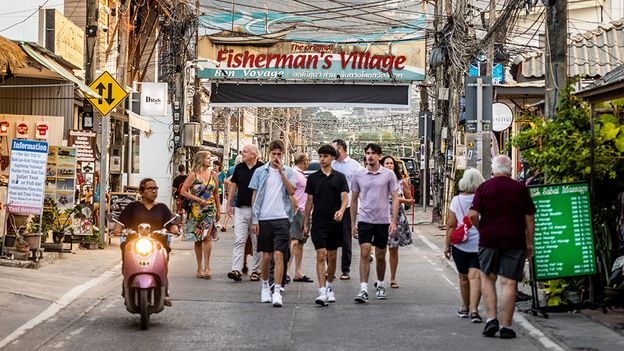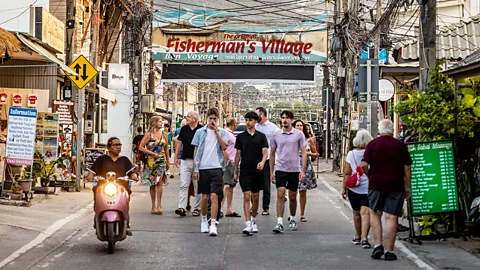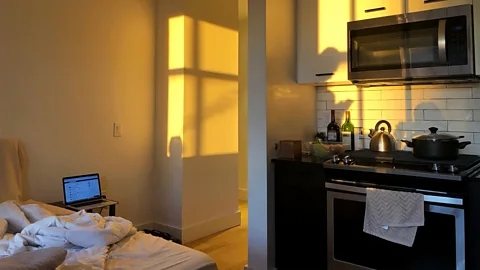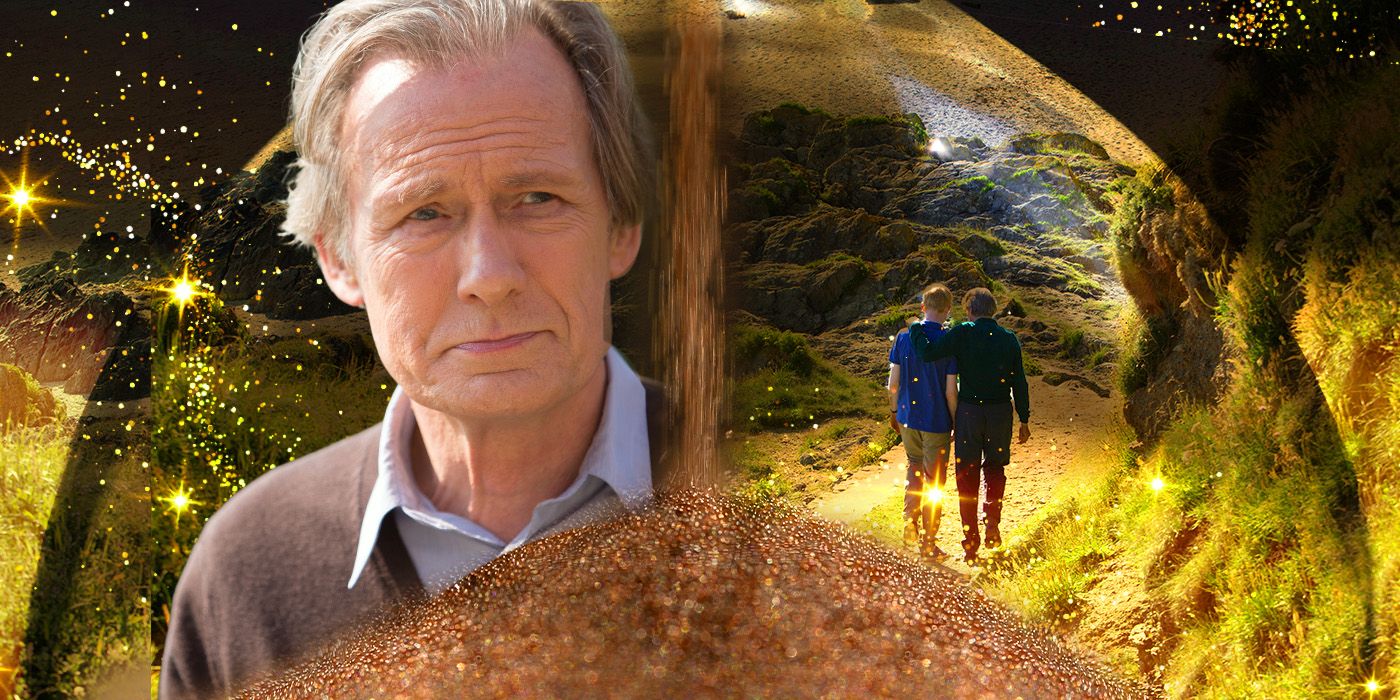Travel
‘Set-jetting’: How on-screen locations are becoming travel destinations

 Getty Images
Getty ImagesIncreasing numbers of travellers are seeking out the real-life filming locations of their favourite shows, even if the reality of life there is very different than how it’s portrayed.
Filming for the third season of the Emmy-winning series The White Lotus has wrapped, and HBO released a teaser this week that revealed intriguing new cast details. When the first two seasons of the show were set in Hawaii and Sicily, respectively, Expedia noticed that searches for the destinations spiked by more than 300%. Similarly, traffic increased 160% for the London suburb of Richmond where Ted Lasso was filmed and 65% for Norway after it appeared in the final season of Succession. If these trends are any indication, the number of travellers searching for Bangkok, Phuket and Ko Samui (the filming locations for White Lotus season three), is likely to soon surge as well.
This phenomenon of “set-jetting”, where travellers journey to the filming locations of popular shows and films, has been gaining traction for a few years. But thanks to its increasing popularity, Expedia named it one of its top travel trends of 2024.
Yet, while many travellers head to filming locations expecting these destinations to feel similar to their on-screen personas, the reality is often quite different. Sunny Los Angeles is often subject to overcast “June gloom” in the early summer, and laid-back Amsterdam has been cracking down on tourists who treat the city as just a party destination.
 Getty Images
Getty ImagesAnother city that is often portrayed with an especially rosy glow is Paris. In fact, it’s even known to have inspired a psychotic state among visitors. Known as Paris syndrome, this rare phenomenon can include heart palpitations, dizziness and even hallucinations, and it’s believed to be brought on by a combination of culture shock and extreme disappointment that the French capital doesn’t live up to its idealised portrayal.
So while the popularity of the Netflix show Emily in Paris has seen an increase in visitors to the city, some people are seemingly crushed to find that the City of Lights isn’t always filled with high fashion and attractive single men. Instead, Parisians have a reputation for being a bit standoffish with visitors.
“It’s still a city,” explained Afua Danso, a singer-songwriter and voice coach who has lived in both London and Paris. “[It still has] trash bags… [it still has] rats. To be honest, [I think] a lot of Parisians get annoyed with tourists because it’s like, ‘God, you have this whole romantic view of our city, and we’re tired of our city, and we’re also tired of you.'”
 Getty Images
Getty ImagesAnother destination that looms large in the imagination of viewers and travellers alike is New York City. Fans of shows like And Just Like That, the sequel to the popular 1990s show Sex in the City, could be forgiven for expecting the Big Apple to be all glitz and glamour. Films and TV series often highlight New Yorkers’ high-end lifestyles and suggest it’s common for the average person to live in a spacious apartment overlooking Central Park. Yet, the size of the city’s apartments on TV relative to what characters do for a living is often the butt of jokes among local residents.
“My first apartment was on 30th [Street] and 8th [Avenue] right by Penn Station,” said Taylor DeNapoli, a dancer and event planner. “It was the size of my bathroom now, with a shared bathroom and shower in the hallway. Safe to say, the apartments you see on TV are made for sets.”
Similarly, Italy is often portrayed as being full of nothing but delicious food, quaint towns and beautiful people. Countless films and shows like the Netflix drama From Scratch have touted cities like Florence as the perfect place to go to fall in love. Meanwhile, the classic movie Under the Tuscan Sun has made many viewers consider the possibility of renovating a dilapidated Italian villa. This romanticised impression, however, can be far from the truth.
“The reality is that Italy is a beautiful, complicated, frustrating place,” says Kathy McCabe, host of the PBS show Dream of Italy and founder of the eponymous magazine. “The bureaucracy seems like a stereotype, but it is a real thing. It can be difficult to get things done in Italy. Dealing with any kind of renovations… the movies sometimes make those seem romantic but, renovating an old house can take three, four or five times as long as it seems and costs that much more.”
One show that may have captured at least a bit of the experience of living in an iconic city is Fleabag, set in London. In it, the titular character’s brash sense of humour often rubs fellow Londoners the wrong way. “London, in general, is more reserved,” Danso explained.
Despite the less glamourous realities residents in these cities experience, they’re adamant that they’re still worth the visit. “New York can be glitz and glam on one block and then trash and grunge the next,” said DeNapoli. “That is what makes it so special to me… Big or small [apartments], the city will always have a special place in my heart.”
While how a destination is portrayed on screen may lure you to want to visit, it shouldn’t serve as a blueprint of what to expect. In fact, if anything, many of these fictionalised portrayals reveal how not to best experience a place’s unique local culture. For example, instead of spending so much time at their resorts, the guests in the first two seasons of The White Lotus might have gained a deeper understanding of Hawaiian and Italian culture had they met more locals.
So while season three of the razor-sharp dark comedy is bound to be filled with drama and entitled wealthy travellers, here’s hoping it will also feature plenty of scenes of Bangkok’s frenetic night markets or Phuket’s sleepy fishing villages – in addition to scenes of The White Lotus’ luxury resort. After all, spending time as residents do, seeking out local experiences and shedding your expectations of what a place is “supposed” to be, may just deliver a more rewarding set-jetting experience.











